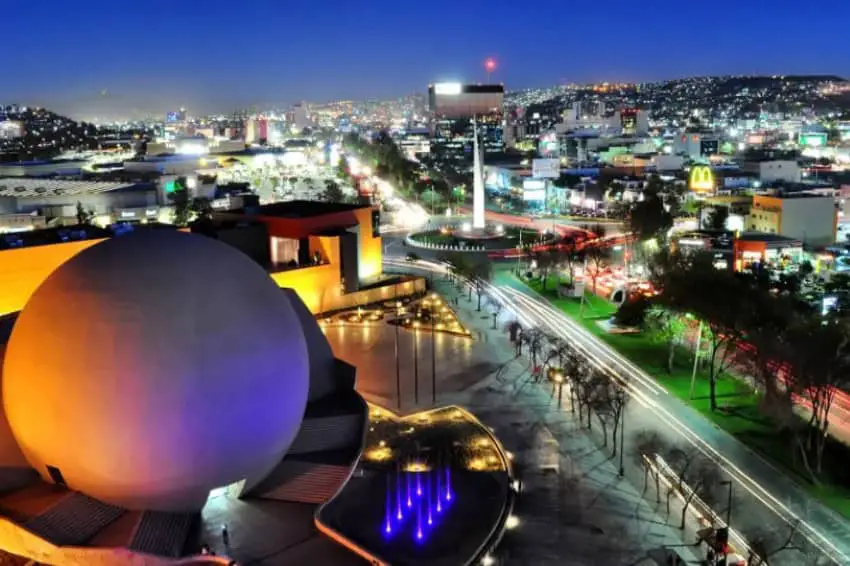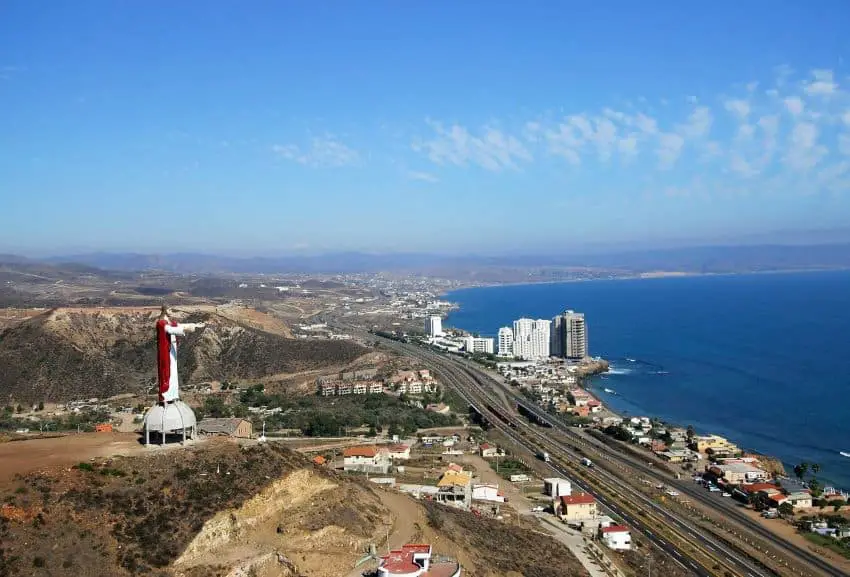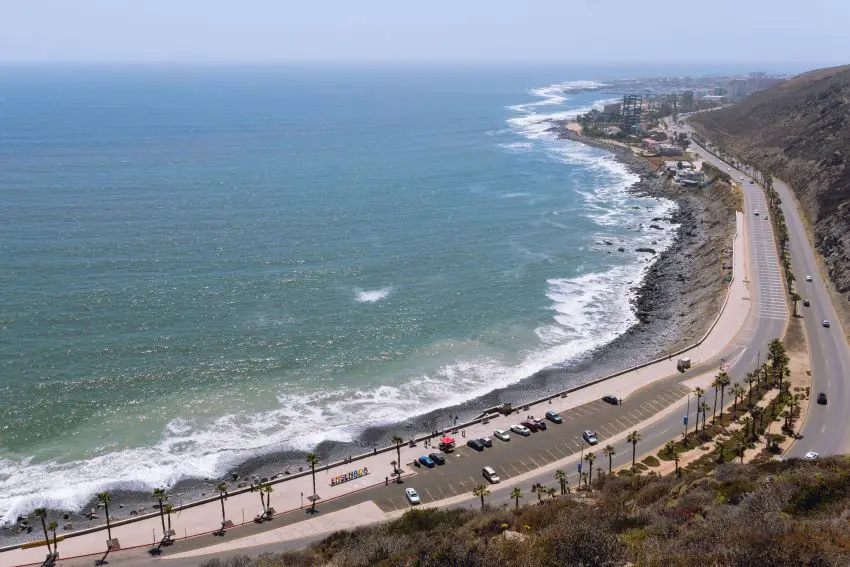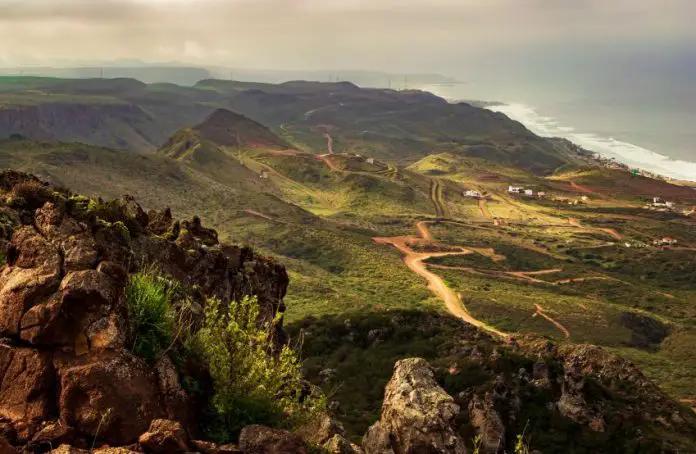Most of the Mexico-U.S. border might feel like an off-limits option in today’s binational immigration and security environment. There are six Mexican states across this line in the sand and there’s not much good news coming from either side of “la frontera.” Yet one state (Baja California, which comprises of the northern half of the Baja California peninsula) should draw your attention, for a lifestyle where straddling U.S. and Mexico living might make for the perfect combination of foreign and familiar.
I get asked “Why do you live in Mexico?” by friends and acquaintances, especially when traveling to the U.S. or overseas. If I want to boil down the Mexico living rationale, I often resort to a refrain that sums up this country’s most salient advantage when comparing Mexico with other overseas living options: “foreign and familiar” — a mixture of cultural, culinary, linguistic, historical, and societal expressions co-existing with Mexico’s acceptance and embrace of many things “American” — peanut butter on your morning toast, pyramids in the afternoon; colonial cities and Costco; el Beis (baseball) and birria. I could go on and on.

It’s a region of Mexico with a high degree of familiarity for West Coasters (a Tijuana day trip is a rite of passage for those growing up in SoCal), albeit a mystery to many others exploring coastal living options in Mexico. It’s a place that has sourced many, many stereotypical portrayals of Mexican identity (sometimes unfairly), while also carving out a bicultural hybrid identity that might someday call into question whether a walled border even matters. The urban complex, San Diego-Tijuana, is already one of the hemisphere’s most energetic landscapes of cooperation and entwined destinies. Being a part of this future might just be your Mexico living sweet spot.
Hands down, Baja California is the only place to live on the coast enjoying a “Mediterranean” climate of warm (but rarely humid) summers and winters with seasonal rains and a very stable mean daily temperature. Like San Diego, there will be overcast mornings and don’t expect tropical greenspaces or forested hills.
Connectivity and Care also earn high marks, as Baja living gifts its inhabitants with the best of Mexico and the U.S. when it comes to getting back home (using San Diego and Tijuana airports for domestic and international flights) and the best of border medicine with Medicare. Sure, you’ll need to get past layers of highway obstacles and a relatively slow international border crossing reality, but San Diego is pretty much within your grasp. Well, unless you opt for Ensenada a further 144 kilometers (89 miles) away.
I would never discount or degrade the culture of Baja California, coopted by U.S. commercial and popular cultural incursions. But the state has also earned its own independence and identity when it comes to lifestyles, artistic expressions and familial and societal relations in defiance of California’s tidal wave of influences. No, you won’t find iconic Mexican relics of archaeology, Spanish colonial architecture, or jaw-dropping landscape diversity. Here, it’s mostly desert, especially if you’re heading inland away from the Pacific. You’ll need to take a flight (three hours to Mexico City) to get your fix of “real” Mexico.
That said, you’ll find plenty of reasons to explore your local surroundings: Tijuana’s sophisticated dining and multicultural performing arts scene, Mexico’s premiere wine country (just over the hill from Ensenada), beaches and more beaches, and two magnificent bodies of water (the Pacific Ocean and the Gulf of California).
Tijuana

Starting with Tijuana, there are probably more U.S. passport holders living full and part-time than in any other state. English is widely spoken. With 2.1 million metro-area residents, universities, museums, performing arts (Teatro Las Tablas, Centro Cultural Tijuana, Casa de la Cultura), and some of Mexico’s most innovative seafood, Tijuana defies the stereotypes of its past.
Tijuana is a manufacturing powerhouse and as a result, offers non-stop flights to China. Some 45,000 K-12 students and 45,000 others head into California for work and school every day. A post-COVID-19 sea of remote workers takes advantage of lower cost of living (although this has led to a rise in rental costs), income-tax savings (heard of the Foreign Earned Income Exclusion?) and a cultural spark that’s just not found in the States.
But there are security issues. Crime, cartel violence, car-jackings, and the ever-menacing border tension realities loom over the area. More U.S. citizens are homicide victims in Baja California State than in any other state in Mexico. A commute to the States for work is brutal by most accounts (50 million annual border crossings happen here). Remote workers experience less stress. As one social media post highlights, “If you want to make the sacrifice, have an end game; don’t be another hamster on the wheel or you’ll go crazy.”
Rosarito

Rosarito (population 127,000); what can you say about it? What started as a humble beach town with a wooden pier and lifeguard stations (another nod to the SoCal beach experience) has grown into a bedroom community for Tijuana and high rise condo towers for thousands of foreigners. Highway 1 and 1D form arteries that run smack dab through the center of town. In some ways, living here is more about convenience than culture or even “resort” amenities. It’s a surfer haven for some and a breakfast club or happy hour social scene for others.
Gated residential communities line the coast north and south of the city center. More a “mistake” of development than anything very cohesive, the city never rates in the top ten for Mexican beach resorts with a “wow factor.” There are some high-rise beachfront hotels, but few visitors come for long vacation stays, meaning the weekend “invasion” is more the cycle.
But it is Mexico’s lobster capital. Puerto Nuevo in particular has Baja-Med cuisine (making dining here expensive by Mexican standards), micro-breweries and Mexico’s biggest annual beach party, Baja Beach Fest, in August. There is a muted multicultural art scene centered around painting and sculpture, and two English-language theater companies. You’ve got convenience, a daily mean temperature of 70 degrees Farenheit (21 Celcius), and sandy Pacific beaches. Oh, and Rosarito was the source of rocks for the 1970’s Pet Rock craze.
Ensenada

An hour’s drive to the south is Ensenada, described by one travel guide as “hedonistic Tijuana’s cosmopolitan sister.” It’s big enough (population 444,000) to stand on its own when it comes to services and amenities and it’s far enough from the border (104 km) to require some effort to get here. This all makes for a haven from the border calamity up north. And Ensenada’s Mexican and expat societies enjoy shared coastal living experiences that can be harder to find in Mexico’s “fly-in,” more trafficked beach locations.
Those who make the effort to get here (and live year round) are rewarded with a seaport personality and the arrival of 3 to 4 ships per week, Mexico’s best seafood dining and the premier wine country (just over the hill in Valle de Guadalupe), surprising micro-climates should the cool overcast weather grows tiresome and affordability. There are universities and research institutes, some offering courses in English in marine science, winemaking and other interests. Museo de la Historia, Plaza de la Patria and Ventana al Mar Park are all casual hang-outs for expats.
You’ll also find a diversity of residential neighborhoods in central Ensenada and many more toward the south of the city. You’ll want a car if you live here, and some reports say beach swimming in central Ensenada is not recommended, due to sewage spills — more prevalent in winter than summer. Sound familiar, SoCal?
Baja California living straddles the U.S. and Mexico, drawing the best conditions for a “foreign and familiar” lifestyle. It’s SoCal with an accent, a tribute to the challenges and rewards of a binational landscape.
The ratings
A full breakdown of our rating system can be found here.
![]()
What did we get right? What do you disagree with? Let us know in the comments.
You can see more of our Where to Live in Mexico 2024 series here, including ratings for Yucatán, Oaxaca and Quintana Roo.
Author Greg Custer lives in Mexico. He’s worked for over 40 years in international tourism, educating travel advisors around the world about Mexico and other Latin American destinations. He helps folks explore Mexico for living at www.mexicoforliving.com.
